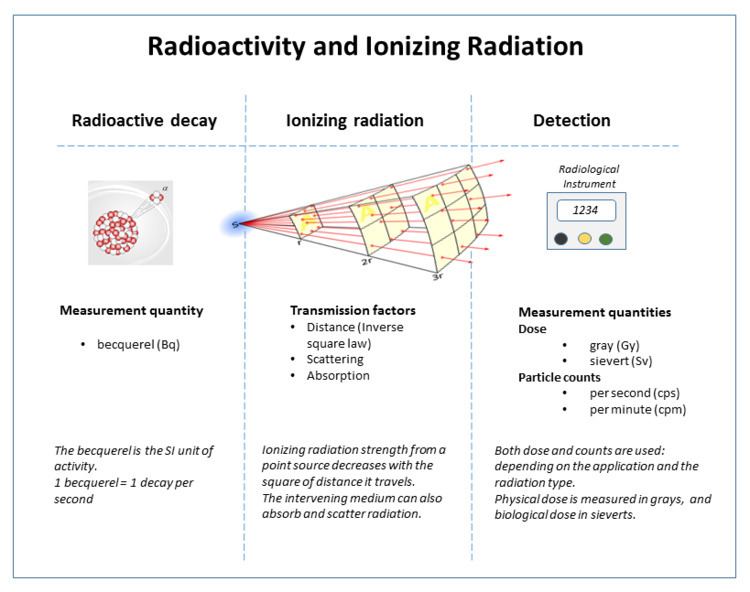Unit system SI derived unit Symbol Bq In SI base units s | Unit of Radioactivity Named after Henri Becquerel | |
 | ||
The becquerel (symbol Bq) is the SI derived unit of radioactivity. One becquerel is defined as the activity of a quantity of radioactive material in which one nucleus decays per second. The becquerel is therefore equivalent to an inverse second, s−1. The becquerel is named after Henri Becquerel, who shared a Nobel Prize with Pierre Curie and Marie Curie in 1903 for their work in discovering radioactivity.
Contents
Capitalization
As with every International System of Units (SI) unit named for a person, the first letter of its symbol is uppercase (Bq). However, when an SI unit is spelled out in English, it should always begin with a lowercase letter (becquerel)—except in a situation where any word in that position would be capitalized, such as at the beginning of a sentence or in material using title case.
Definition
1 Bq = 1 s−1
A special name was introduced for the reciprocal second (s−1) to represent radioactivity to avoid potentially dangerous mistakes with prefixes. For example, 1 µs−1 could be taken to mean 106 disintegrations per second: 1·(10−6 s)−1 = 106 s−1. Other names considered were hertz (Hz), a special name already in use for the reciprocal second, and fourier (Fr). The hertz is now only used for periodic phenomena. Whereas 1 Hz is 1 cycle per second, 1 Bq is 1 aperiodic radioactivity event per second.
The gray (Gy) and the becquerel (Bq) were introduced in 1975. Between 1953 and 1975, absorbed dose was often measured in rads. Decay activity was measured in curies before 1946 and often in rutherfords between 1946 and 1975.
Prefixes
Like any SI unit, Bq can be prefixed; commonly used multiples are kBq (kilobecquerel, 103 Bq), MBq (megabecquerel, 106 Bq, equivalent to 1 rutherford), GBq (gigabecquerel, 109 Bq), TBq (terabecquerel, 1012 Bq), and PBq (petabecquerel, 1015 Bq). For practical applications, 1 Bq is a small unit; therefore, the prefixes are common. For example, the roughly 0.0169 g of potassium-40 present in a typical human body produces approximately 4,400 disintegrations per second or 4.4 kBq of activity. The global inventory of carbon-14 is estimated to be 7018850000000000000♠8.5×1018 Bq (8.5 EBq, 8.5 exabecquerel). The nuclear explosion in Hiroshima (An explosion of 16 kt or 67 TJ) is estimated to have produced 7024800000000000000♠8×1024 Bq (8 YBq, 8 yottabecquerel).
Relationship to the curie
The becquerel succeeded the curie (Ci), an older, non-SI unit of radioactivity based on the activity of 1 gram of radium-226. The curie is defined as 3.7·1010 s−1, or 37 GBq.
Conversion factors:
1 Ci = 7010370000000000000♠3.7×1010 Bq = 37 GBq1 μCi = 37,000 Bq = 37 kBq1 Bq = 6999999000000000000♠2.7×10−11 Ci = 6999999000000000000♠2.7×10−5 µCi1 MBq = 0.027 mCiCalculation of radioactivity
For a given mass
With
Since m/ma is the number of moles (n), the amount of radioactivity
For instance, on average each gram of potassium contains 0.000117 gram of 40K (all other naturally occurring isotopes are stable) that has a
Radiation-related quantities
The following table shows radiation quantities in SI and non-SI units.
